Results 10,381 to 10,390 of 12096
Thread: Anandtech News
-
02-27-20, 04:55 PM #10381
Anandtech: A Big Bet on SOI: GlobalFoundries Preps Another Supply Agreement for 300mm
Having dropped out of the race for leading-edge manufacturing technologies in order to focus on specialty fabrication processes, GlobalFoundries has pinned some big hopes in manufacturing RF-SOI chips for various 5G applications, as well as FD-SOI chips for low-power devices. This week the company signed a memorandum of understanding (MOU) with GlobalWafers Co. (GWC) to develop a long-term supply contract for 300 mm SOI wafers, GloFo's second long-term SOI wafers supply agreement (WSA) in less than a year.
Once primarily used to build leading-edge processors, silicon-on-insulator (SOI) technology is used today for a wide variety of applications, including those that need an ultra-low power consumption (SoCs and MCUs for IoT applications), high voltages (analog/mixed signal), or high resistivity (4G and 5G front-end modules [FEMs] for smartphones). All of these are made using so-called specialty manufacturing technologies, and to that end they are of tremendous interest for GlobalFoundries. Meanwhile, considering the rise of 5G and IoT, RF-SOI and FD-SOI are the most promising technologies when it comes to producing the necessary chips in high volumes.
Nowadays, GlobalFoundries operates seven fabs: four 300-mm fabs (including the Fab 10 in East Fishkill, New York) and three 200-mm fabs. The company’s largest 300-mm Fab, Fab 1, is used exclusively to make SOI products, Fab 7 in Singapore uses both bulk and SOI technologies, and Fab 10 can also process wafers using SOI-based processes. In addition, GlobalFoundries is building another 300-mm fab in Chengdu, China, which will also be used to make chips using its 22FDX technology. Finally, the foundry’s 200-mm facilities can all use SOI wafers as well.
Being the largest consumer of SOI wafers in the world, GlobalFoundries sources 200-mm and 300-mm substrates from both Soitec, the world’s largest producer of SOI wafers, as well as GlobalWafers Co. In fact, in just the last year GloFo and Soitec signed a multi-year 300-mm SOI wafer supply agreement, which builds upon a WSA signed in 2017. As it turns out, GlobalFoundries needs even more 300-mm SOI wafers for its advanced RF SOI technologies, so the company is going as far as agreeing to help GWC ‘significantly expand’ its SOI wafer manufacturing capacity as part of the new contract.
GlobalFoundries, Soitec, and GlobalWafers Co. naturally do not disclose how many wafers are consumed by the chip maker. Regardless, it looks like we are talking about a significant expansion of SOI usage at GlobalFoundries.
Bami Bastani, senior vice president for mobile and wireless infrastructure at GlobalFoundries:
“Mobile, wireless, and 5G represent a significant opportunity for GlobalFoundries, and our vital RF technology is featured in more than 85% of smartphones on the market today. We are pleased to collaborate with GlobalWafers, and look forward to working with them to develop and qualify an additional supply of 300mm SOI wafers to integrate into our manufacturing processes and help meet the growing demand for our RF SOI solutions.”Tom Weber, senior vice president and chief procurement officer at GlobalFoundries said the following:
“Given our market position, it is in our best interest – and the best interest of our clients – to build out and diversify the supply chain for 300mm SOI wafers. GlobalWafers is the right partner for us to make this happen.”Related Reading:
- GlobalFoundries Stops All 7nm Development: Opts To Focus on Specialized Processes
- GlobalFoundries Weds FinFET and SOI in 14HP Process Tech for IBM z14 CPUs
- GlobalFoundries to Expand Capacities, Build a Fab in China
- GlobalFoundries and Chinese Authorities Reconsider Plans
- GlobalFoundries Enables Connectivity IP: New RF SOI and Ensigma BLE on 22FDX
Source: GlobalFoundries
More...
-
02-28-20, 03:46 PM #10382
Anandtech: Corsair’s One Pro i200: A Compact HEDT with Intel’s 10th Gen 14-Core CPU &
Corsair has introduced a new version of its One Pro i-series compact high-end desktop (HEDT) that further improves performance for prosumers and gamers. The new Corsair One Pro i200 machine packs a 14-core Intel Core X-series processor as well as NVIDIA’s top-of-the-range GeForce RTX 2080 Ti graphics card. Interestingly, Corsair’s new flagship desktop PC costs $500 less than the company’s previous HEDT machine at launch.
The Corsair One Pro i200 high-end desktop comes in the same 12-liter grey chassis with two RGB stripes as the Corsair One Pro i180. The new system continues to use ASRock’s X299E-ITX/ac motherboard, which now houses the 14-core Core i9-10940X processor (Cascade Lake) as well as the GeForce RTX 2080 Ti. The CPU and the GPU are cooled down using individual closed-loop liquid cooling systems, dissipating a total of ~400 W of thermal power.
Being based on standard PC parts, the system is fully upgradeable, including the CPU, GPU, and other parts. That said, the i200 lives up to the 'compact' name, so maneuvering room as well as overall TDPs need to be taken into consideration before any significant alterations.
Designed for the performance-hungry users, the Corsair One Pro i200 comes with 64 GB of DDR4-2666 memory, and a 2 TB M.2/NVMe SSD (the manufacturer no longer uses a 2.5-inch SATA HDD). Connectivity wise, the system is equipped Intel’s Wireless-AC 8265 802.11ac + Bluetooth 4.2 controller, two GbE ports (driven by Intel’s I219-V and I211-AT), six USB 3.0 Type-A connectors, one USB 3.1 Gen 2 Type-C port, a TRRS audio jack, and four display outputs (three DisplayPort 1.4 and one HDMI 2.0b).
The Corsair One Pro i200 with Intel’s 14-core Core i9-10940X CPU and NVIDIA’s GeForce RTX 2080 Ti GPU is available immediately for $4,499. The system is covered by a two-year warranty.Specifications of the Corsair One Pro i200 HEDT PC Model Corsair One
Pro i200Product ID CS-9040004 CPU Core i9-10940X
14C/28T
3.30 GHz Base
4.60 GHz Turbo
165 WGPU GeForce RTX 2080 Ti
1350-1545 MHz
11 GB GDDR6
14 Gbps
250 WCooling Custom closed-loop air+liquid cooling systems DRAM 64 GB DDR4-2667 Motherboard mini-ITX, X299 chipset Storage SSD 2 TB NVMe HDD - I/O Intel’s Wireless-AC 8265 802.11ac + Bluetooth 4.2 adapter
2 × GbE ports (driven by Intel’s I219-V and I211-AT)
6 × USB 3.0 Type-A connectors
1 × USB 3.1 Gen 2 Type-C port
1 × TRRS audio jack
1 × DisplayPort 1.4
3 × HDMI 2.0bPSU 750W SFX Warranty 2 years MSRP $4,499
Related Reading:
- Corsair One Pro i180: New Flagship Mini-PC with i9-9920X and RTX 2080 Ti
- Corsair ONE Gets Caffeinated: Now with Coffee Lake
- Corsair’s ONE SFF PCs Get Upgraded: GeForce GTX 1080 Ti, 32 GB of RAM, NVMe SSD
- CORSAIR ONE Gaming PC Released
- Corsair’s Bulldog 2.0 Gets Kaby Lake-Compatible Z270 Motherboard, New Cooler
Source: Corsair
More...
-
02-28-20, 06:05 PM #10383
Anandtech: MSI Launches Optix MAG272CRX: A 27-Inch, 240Hz Curved Monitor with USB-C
Having announced a number of interesting displays recently, MSI this week unveiled a yet another monitor featuring a rare combination of capabilities. The Optix MAG272CRX is a 27-inch curved monitor that has a maximum refresh rate of 240 Hz and only one direct rival on the market. The launch of the LCD corresponds with MSI’s general strategy to release monitors in less common configurations/markets to avoid the race to the bottom of highly commoditized markets.
The MSI Optix MAG272CRX display is designed for gamers and eSports professionals looking for high-end performance. To that end, the LCD relies on an 8-bit+FRC VA panel featuring a rather aggressive 1500R curvature, a 1920×1080 resolution, 300 nits maximum brightness, a 3000:1 contrast ratio, 178°/178° viewing angles, a 1 ms response time, and a 240 Hz maximum refresh rate. The monitor can display 16.7 million colors and reproduce 89% of the DCI-P3 and 113% of the sRGB color spaces, which is something one expects from a fast VA panel.
A panel with very similar characteristics is used by the Samsung CRG5 and considering the fact that the South Korean company is one of the primary makers of VA panels, it is highly likely that the model Optix MAG272CRX uses the same panel as the CRG5. As a result, the latter has only one direct competitor on the market (at least from a well-known brand), which is positive for MSI.
Being aimed at gamers, the Optix MAG272CRX naturally supports VESA’s Adaptive-Sync technology and is AMD FreeSync certified (for a 48 Hz to 240 Hz range). In addition, the monitor is marked ‘HDR Ready’ (though without elaborating about supported HDR transport) and features MSI’s customizable Mystic Light RGB LEDs on the back.
On the connectivity side of things, the LCD has one DisplayPort 1.2a inputs, two HDMI 2.0b ports, and a USB Type-C input (with DP Alt mode and Power Delivery). The monitor also has a dual-port USB 3.2 Gen 1 hub, and a headphone out. As for ergonomics, the stand used by the Optix MAG272CRX can adjust height and tilt, but not swivel.
MSI has announced neither pricing nor availability timeframe of its Optix MAG272CRX curved display. Meanwhile, Samsung’s CRG5 monitor that presumably uses the same panel is available directly from the manufacturer for $369.99, which at least gives us a baseline for expectations.The MSI Curved Gaming Display w/ 240 Hz Refresh Optix MAG272CRX Panel 27" VA Native Resolution 1920 × 1080 Maximum Refresh Rate 240 Hz Response Time 1 ms Brightness 300 cd/m² (typical) Contrast 3000:1 Backlighting LED Viewing Angles 178°/178° horizontal/vertical Curvature 1500R Aspect Ratio 16:9 Color Gamut 89% DCI-P3
113% sRGBHDR 'HDR Ready'
No DisplayHDR tierDynamic Refresh Rate Tech VESA Adaptive-Sync
AMD FreeSync certified
48 Hz - 240 HzPixel Pitch 0.3113 mm² Pixel Density 81 PPI Inputs 1 × DisplayPort 1.2
2 × HDMI 2.0Audio 3.5 mm output USB Hub 1 × USB 3.0 Type-A input Stand Adjustments Height: 130 mm
Tilt: -5? - 20?
Swivel: noMSRP ?
Related Reading:
- MSI Reveals Optix MAG322CR: A 31.5-Inch Curved Monitor with a 180 Hz Refresh Rate
- MSI Reveals Optix MEG381CQR 37.5-Inch HDR600 144 Hz Curved Monitor
- A 27-Inch 240 Hz 2560x1440 Monitor: AOC Reveals Agon AG273QZ
- Gone in 240 Hz: Lenovo’ Legion Y25-25 ‘Fast IPS’ Monitor w/ FreeSync at CES 2020
- Quick & Deadly: Alienware 25 (AW2521HF) 240 Hz Fast IPS Monitor Revealed
- 280 Hz Fast: ASUS Releases TUF Gaming VG279QM IPS Monitor w/ 280 Hz
Source: MSI (via Hermitage Akihabara)
More...
-
02-28-20, 06:05 PM #10384
Anandtech: AMD Posts Radeon Software 20.2.2 Drivers: Focusing on Bug Fixes and Stabil
Finding themselves under some fire as of late for driver quality, AMD has released their second Radeon driver update for February. Focused on improving driver stability, today's release, 20.2.2, incorporates a number of quality-of-life fixes for the drivers, including resolving system hangs and Chrome issues.
As this is essentially a bugfix driver, there are no new features to speak of. Instead, AMD’s focus, according to their release notes, is all about cataloging and fixing various driver bugs. Along with immediate stability issues, the drivers also make note of fixing issues with The Witcher 3, Metro Exodus, AMD's software overlay, and Battlefield V.
As always, AMD’s latest drivers can be found on their driver download page.
- Performing a task switch with some Radeon Software features enabled or some third-party applications with hardware acceleration running in the background may cause a system hang or black screen.
- Improvements have been made that allow for more responsive fan ramp up or fan ramp down times on Radeon RX 5700 series graphics products.
- Performance Metrics Overlay and Radeon WattMan incorrectly report lower than expected clock speeds on Radeon RX 5700 series graphics products during gaming workloads.
- When Instant Replay is enabled, a TDR or black screen may occur when launching games or applications.
- A black screen may occur when toggling HDR on in the game settings of Battlefield™ V.
- The Witcher 3: Wild Hunt™ may experience an application hang or black screen during certain parts of the game or intermittently during gameplay.
- Some video content in Chrome™ may appear as a black screen or be unresponsive on Radeon RX 5000 series graphics products when hardware acceleration is enabled.
- Metro Exodus™ may experience an application hang or TDR when choosing some specific dialogue prompts in the Sam’s Story DLC.
- Grand Theft Auto™ V may experience an application crash when invoking Radeon Software’s overlay with third party OSD applications running.
- Monster Hunter World™: Iceborne may experience intermittent crashes while idle or on the character creation screen.
- Some games colors may appear washed out when HDR mode has been enabled in game and Windows® on Radeon RX 5700 series graphics products
- After a Factory Reset installation with the ‘Keep My Settings’ option chosen, Instant Replay could fail to function if it was enabled in the previous Radeon Software installation.
- When invoking Radeon Software’s overlay while a game is open users may observe flickering in the game or in the Radeon Software interface.
- Radeon Software may experience a crash and error message when locking Windows® or performing a sleep or hibernate with the Radeon Software Streaming tab open.
- A loss of display with working audio may be experienced on a limited number of displays when performing a mode change on Radeon RX 5000 series graphics products.
- Radeon Software may fail to launch if Radeon Software’s overlay is disabled and a game is running in the background.
- Battlefield™ V may experience an application hang or TDR after extended periods of play.
- Some Origin™ games may fail to be detected or may detect the incorrect game title in Radeon Software.
- Some productivity applications are being detected and listed in the Radeon Software games tab.
- The Radeon Chill hotkey could sometimes continue to remain enabled once the user has removed or disabled the hotkey.
- Red Dead Redemption™ 2 may exhibit blocky textures on snow covered terrain.
- After resuming from sleep, Chrome™ may experience an application crash if video content was previously playing on Radeon RX 5700 series graphics products.
- Radeon FreeSync status in Radeon Software may sometimes fail to update when enabling or disabling the feature through the display itself.
- Fortnite™ may experience an application crash on Radeon RX 500 series Hybrid Graphics system configurations.
More...
-
02-28-20, 11:37 PM #10385
Anandtech: GDC & Open Compute Project Global Summit Latest Events Scrubbed Due to Cor
Following the ongoing global spread of the SARS-CoV-2 virus, there has been ongoing pressure on event organizers from both attendees and local groups to curtail or cancel events out of concern of major events rapidly propagating the virus. We’ve already seen major international shows like Mobile World Congress canceled due to these reasons, and now with the novel coronavirus spreading in more western countries as well – including the United States – the spread is now leading to additional, more local events being canceled.
This afternoon the organizers behind the 2020 Game Developers Conference (GDC), as well as the organizers behind the 2020 Open Compute Project (OCP) Global Summit have announced that they have scrubbed their respective events, which were scheduled to take place next month. OCP’s event has been canceled entirely, meanwhile the GDC organizers are officially postponing their event, with hopes of still holding it in the summer.
The latest cancelations come as additional vendors have been pulling out of GDC. Sony and Facebook had previously pulled out last week, and this week has seen Microsoft, Epic Games, Amazon, and Activision all pull out of the show as well. Which would still leave a large show like GDC with a significant content slate, but none the less the giants of the show have a great importance to it.
In lieu of holding their events as planned, both groups are looking at what they can to help their participants still make their respective announcements and hold their talks. The OCP team has told participants that they “would like to work with you on following through with those announcements to the Community, and the industry at large, over the next week.” Meanwhile on top of conducting a summer event, GDC organizers are hoping to distribute talks over their YouTube channel and their content vault, telling attendees that “In order to allow our conference speakers to still participate in the event, we are intending to make many of the presentations that would have been given at GDC 2020 available for free online.” Both groups seem to be flying by the seat of their pants to a certain degree, but hopefully we’ll see their remote presentation plans come to fruition.
These cancelations are among the latest events to get canceled in the technology industry. On top of these large, public events, within AnandTech we’ve seen some smaller, press-only events canceled as well. So while not every last event has been canceled at this time – notably, NVIDIA’s 2020 GPU Technology Conference is still on – it’s increasingly looking like the tech industry is going to be taking a widescale break on events throughout March.
Sources: Open Compute Project, GDC
Carousel Image Courtesy of: CDC/Alissa Eckert, MS
More...
-
03-02-20, 12:56 PM #10386
Anandtech: NVIDIA's 2020 GTC Becomes Latest Coronavirus Event Casualty: Now Digital-O
Following the ongoing saga of technology event cancelations into March and beyond, NVIDIA has now become the latest event host to cancel or substantially alter a planned event due to concerns over the spread of the SARS-CoV-2 coronavirus. The company's annual GPU Technology Conference (GTC), which as of just last week was still scheduled to take place with enhanced sanitization procedures in place, has now become an all-digital show. As a result, NVIDIA will still be holding certain events – including most critically, CEO Jensen Huang's keynote talk – just without the physical component.
NVIDIA's brief (and seemingly hasty) announcement is short but straightforward: out of concern over the virus, the physical event is canceled. In its place the keynote will be delivered via livestream, and NVIDIA is "working with our conference speakers to begin publishing their talks online beginning in the weeks ahead". Overall, NVIDIA is taking a route very similar to what we've seen a few other conferences plan for, allowing interested participants and speakers to still deliver their own presentations digitally. For many of these companies and individuals, they have product announcements or disclosures that have been in the works for months and/or are tied to other announcements, so they still intend to make those announcements in some form.
As for NVIDIA, the company has ample experience delivering keynote presentations via livestream – indeed for the many thousands of GTC attendees watching Huang's keynote live, many times that number are watching the livestream to begin with. So while Huang may not get to play to a crowd as he likes to do, he won't be without an audience.
Overall, this year's GTC is widely expected to include the announcement of a next-generation compute GPU architecture, making it one of the most important GTCs of the last few years. NVIDIA's current Volta architecture-based GV100 GPU is now a few years old, and supercomputer planning announcements have tipped the fact that NVIDIA will have a new Tesla accelerator ready later this year. The current generation of Tesla accelerators have been a huge success story for NVIDIA, so there's a great deal of interest in seeing how NVIDIA will keep up that momentum, especially in the face of stiff competition from all directions, from FPGA suppliers to Intel's Xe GPU family.
NVIDIA has decided to shift GTC 2020 on March 22-26 to an online event due to growing concern over the coronavirus.
This decision to move the event online instead of at the San Jose Convention Center reflects our top priority: the health and safety of our employees, our partners and our customers.
NVIDIA founder and CEO Jensen Huang will still deliver a keynote address, which will be available exclusively by livestream. We’re working to schedule that and will share details once they’re available.
We will be working with our conference speakers to begin publishing their talks online beginning in the weeks ahead. Please visit https://www.nvidia.com/en-us/gtc/ for updates.
Additionally, for those in NVIDIA’s developer program, we plan to schedule availability with our researchers, engineers and solution architects to answer technical questions.
Those who have registered for a GTC pass will receive a full refund. Stay tuned for details.
We’re grateful to the great many individuals and partners who have worked to support this event and thank them for their understanding during these unusual times.
More...
-
03-02-20, 12:56 PM #10387
Anandtech: UFS 3.1 Storage Devices for Smartphones Unveiled by Kioxia & Western Digit
Less than a month after JEDEC published its UFS 3.1 specification, Kioxia and Western Digital have introduced their first UFS 3.1-compliant storage devices for smartphones. Samples of Kioxia’s UFS 3.1 drives will be available to manufacturers shortly, while Western Digital is on track to ship UFS 3.1 devices commercially next month, just in time for the launch of mainstream 5G smartphones.
Western Digital’s iNAND EU521: 128 GB and 256 GB Available in March, 512 GB Hinted
Western Digital’s iNAND EU521 embedded drives will initially offer 128 GB and 256 configurations in an industry-standard 11.5×13×1.0 mm package. The storage device is based on the company’s proprietary controller with two NAND channels as well as two HS-G4 lanes at an 11.6 Gbps data rate, which is coupled with 96-layer 3D TLC NAND memory. Due to a relatively low internal parallelism, the iNAND EU521 is rated for up to 800 MB/s read/write speeds, up from 750 MB/s in case of the iNAND 511 launched last year.
The iNAND EU521 supports three key UFS 3.1 improvements: Write Booster pseudo-SLC caching to improve write performance, Deep Sleep mode, and Performance Throttling Notification. Western Digital stresses that the Write Booster capability has been implemented via a firmware update to the company’s SmartSLC Gen 6 technology that has been used on iNAND devices for years, and which has been refined in multiple ways. Speaking of features, it's worth noting that the drive does not support any kind of Host Performance Booster tech, as it is not really needed for 128 GB and 256 GB drives.
One thing to note is that while officially the family will offer two capacities, the company also publishes images of an iNAND EU521 512 GB drive, which will likely come later.
Kioxia’s UFS 3.1 Family: Up to 1 TB, Sampling
Kioxia has a little bit different UFS 3.1 strategy than its production partner Western Digital. The company will offer a range of UFS 3.1-compliant drives featuring four configurations — 128 GB, 256 GB, 512 GB, and 1 TB — in a 11.5×13×1.0 mm package. The drives naturally use BiCS 3D NAND flash memory, though Kioxia does not reveal which devices.
The Japanese manufacturer will use its own UFS 3.1 controller that will support Write Booster, Deep Sleep, Performance Throttling Notification, and Host Performance Booster technology. The company is not disclosing any actual performance numbers of its UFS 3.1 drives, though it is stressing that their sequential read performance is about 30% higher when compared to Kioxia’s UFS 3.0 products. Also, HPB should boost the random read performance of the device.
Kioxia is currently sampling its UFS 3.1 devices with smartphone manufacturers, but it is unclear when the devices are set to be available.
Related Reading:
- Faster, Cheaper, Power Efficient UFS Storage: UFS 3.1 Spec Published
- 512 GB of UFS 3.0 Storage: Western Digital iNAND MC EU511
- Kioxia Expands Automotive Grade eUFS Lineup: 512 GB for Extreme Conditions
- Toshiba Samples New UFS 2.1 NAND: Up to 900 MB/s Reads For 2018 Smartphones
Sources: Kioxia, Western Digital
More...
-
03-02-20, 02:52 PM #10388
Anandtech: EIZO Unveils ColorEdge Prominence CG3146 HDR Reference Monitor with Calibr
Well known for their high-end and reference-quality monitors, EIZO has introduced their latest reference monitor, the ColorEdge Prominence CG3146, which is designed for HDR content mastering for the broadcast and film industries. The new 31.1-inch monitor largely builds upon technologies developed for its predecessor, the CG3145, but has a number of enhancements, including a built-in calibration sensor and SDI connectivity.
The EIZO ColorEdge Prominence CG3146 monitor is based on a 10-bit IPS panel with a 4096×2160 resolution. All told, the monitor can reproduce 1.07 billion colors, and is assisted by EIZO’s proprietary wide-gamut LED backlighting. According to EIZO, the high-end backlighting tech can control backlight intensity on a per-pixel basis, which enables the LCD to display intensively bright colors and deep blacks without the kind of artifacts seen on monitors with coarser backlighting systems. By the numbers, the CG3146 offers a typical brightness of "just" 1000 nits, but also hits a rather whopping 1,000,000:1 contrast ratio.
The ColorEdge Prominence CG3146 covers 99% of the DCI-P3 color gamut and also supports sRGB, BT.2020, and BT.2100 color spaces. The monitor features a 24-bit 3D LUT (look-up table) for smooth color gradations and supports HLG (hybrid log-gamma) and the PQ (perceptual quantization) curve so that it can be used with various HDR modes/transports. For example, HLG’s luminance tops at 1000 nits (which is suitable for TVs), whereas PQ supports considerably higher brightness of up to 10,000 nits, which is required for recorded content.
Color accuracy is absolutely crucial for post production and color grading workloads, so the ColorEdge Prominence CG3146 comes with an integrated sensor that calibrates the monitor when needed and eliminates the need for an external calibrator device. Meanwhile, apart from qualities of the panel and backlighting, it depends on such factors as ambient and internal temperature of the monitor. To that end, the ColorEdge Prominence CG3146 is equipped with a temperature sensor that measures temperature inside the monitor and estimates temperature outside of it to adjust LCD’s settings in real time to ensure accurate colors. Moreover, the EIZO’s digital uniformity equalizer (DUE) technology not only ensures the right luminance, color temperature, and tones for stable image display across the screen, but also counterbalances the effects that a changing temperature may have on uniformity. Last but not least, the display has a light shielding hood.
Moving on to connectivity, EIZO’s new flagship HDR reference display offers an important improvement here. As expected, the ColorEdge Prominence CG3146 has a DisplayPort capable of DCI-4K with 4:4:4 chroma subsampling at 50/60 Hz, as well as an HDMI 2.0 input capable of DCI-4K with 4:2:2 at 50/60 Hz. Furthermore, the monitor has 12G/6G/3G/HD-SDI BNC inputs and outputs to connect SDI supporting devices, which is a huge improvement for the film and broadcasting industries.
EIZO will demonstrate its ColorEdge Prominence CG3146 flagship HDR reference monitor at NAB trade show in Las Vegas, Nevada, in in late April. The company intends to start shipments in April too, but the exact availability timeframe will vary from country to country.Specifications of the EIZO ColorEdge Prominence Reference HDR Display CG3146 Panel 31.1" IPS Native Resolution 4096 × 2160 Maximum Refresh Rate 60 Hz Response Time 10 ms Brightness 1000 cd/m² (typical) Contrast '1,000,000:1' Viewing Angles 178°/178° horizontal/vertical HDR 24-bit LUT, various transports Dynamic Refresh Rate none Pixel Pitch 0.170 mm² Pixel Density 149 ppi Display Colors 1.07 billion Color Gamut Support DCI-P3: 99%
Adobe RGB: ?%
Rec. 2020: ?%
sRGB: ?Aspect Ratio 1.9:1 Stand to be announced Inputs 1 × DisplayPort 1.4
1 × HDMI 2.0a/2.0b (HDCP 2.2)
BNC (12G/6G/3G/HD-SDI)
BNC (3G/HD-SDI)
1 × USB-B for monitor control and the USB hubOutputs BNC (12G/6G/3G/HD-SDI, through-out (active)
BNC (3G/HD-SDI, through-out (active)USB Hub 3-port USB 3.0 hub Launch Date April 2020
The monitor is covered by a five-year warranty. Though it should be noted that, like other reference monitors based on similar tech, the company is only guaranteeing the monitor's operation for 30,000 hours of usage. The guarantee on brightness and color accuracy, in turn, is even tighter: the monitor's warranty only covers 10,000 hours there, and only when used at a color temperature of 6500K at 800 nits brightness.
Related Reading:
- EIZO Announces ColorEdge Prominence CG3145: 4096x2160, 98% P3 and HDR10
- EIZO Reveals Limited Edition 21.6-Inch Foris Mova OLED Monitor
- ASUS ProArt PA32UCG: The Ultimate Mini LED 4K 120 Hz Monitor with HDR 1600
- ASUS at CES 2019: ProArt PA32UCX 4K Monitor with 1000-Zone FALD Unveiled
- Acer Joins Mini LED Monitor Club with Professional-Focused ConceptD CM7321K
Source: EIZO (via PC Watch)
More...
-
03-02-20, 03:29 PM #10389
Anandtech: Big, Fast, & Curved: The ASUS TUF VG328H1B, A 31.5-Inch Gaming Display
ASUS has unleashed a new TUF Gaming display, the 31.5-inch VG328H1B. The mainstream-segment monitor is aimed at gamers who are after a combination of a large screen size, a curved panel, as well as a high variable refresh rate, all without breaking the bank in terms of pricing.
The ASUS TUF Gaming VG328H1B monitor uses a Full-HD (1920 x 1080) VA panel that features a 1500R curvature, a maximum brightness of 250 nits, a 3000:1 contrast ratio, a 1 ms MPRT response time, and a 165 Hz refresh rate in overclocked mode. The LCD can display 16.7 million of colors and reproduce 120% of the sRGB and 90% of the DCI-P3 color gamut, which is in line with other modern gaming monitors. At the same time, considering mediocre resolution and brightness, it is pretty evident that developers of the LCD prioritized size and performance over everything else, keeping in line with the TUF lineup's mainstream focus and pricing.
The display fully supports VESA’s Adaptive-Sync (with a 48 Hz – 165 Hz range) and carries AMD’s FreeSync Premium badge. But while ASUS says that Adaptive-Sync will work with NVIDIA’s latest GeForce GTX/RTX graphics cards, it has not been certified as G-Sync Compatible. In addition, the TUF Gaming VG328H1B supports ASUS’ ELMB and ELMB Sync technologies designed to make fast-paced scenes look sharper (whether or not variable refresh is activated). Other notable features for gamers supported by the monitor are Shadow Boost (increases brightness in dark areas) as well as GamePlus and GameVisual modes.
For connectivity, the TUF Gaming VG328H1B has one D-Sub input as well as one HDMI 2.0 port, which makes for a rather odd set of inputs. Meanwhile, the device has two 2 W stereo speakers, an audio input, and a headphone output.
As for ergonomics, the ASUS TUF Gaming VG328H1B comes with a stand that can adjust tilt and swivel, but not height. For users who need more than that, the monitor has VESA 100x100 holes, so it can use an appropriate third-party arm or stand.
Otherwise, while they are announcing the monitor, ASUS isn't disclosing any details about pricing and or availability at this time.The 31.5-Inch ASUS TUF Gaming LCD w/165 Hz Refresh Rate TUF Gaming VG328H1B Panel 31.5-inch class IPS Native Resolution 1920 × 1080 Maximum Refresh Rate 165 Hz Dynamic Refresh Technology VESA Adaptive Sync
AMD FreeSync PremiumRange 48 Hz - 165 Hz Brightness 250 cd/m² Contrast 3000:1 Viewing Angles 178°/178° horizontal/vertical Response Time 1 ms MPRT Pixel Pitch ~0.2537 mm² Pixel Density ~100 PPI Color Gamut Support sRGB: 120%
DCI-P3: 90%Inputs 1×D-Sub
2×HDMI 2.0Audio 2W stereo speakers
headphone output
audio inputStand Height: -
Tilt: +23° ~ -5°
Swivel: +/- 15°
Pivot: -Warranty ? years Launch Price ?
Related Reading:
- Faster & TUFer Gaming: The ASUS VG27WQ 27-Inch 165Hz Curved Monitor w/ FreeSync
- AOC Reveals Agon AG273QX: A 27-Inch 165 Hz FreeSync 2 Monitor
- More Hz for Less: GIGABYTE Unveils Aorus FI27Q 27-Inch 165 Hz Monitor
- ViewSonic Introduces Elite XG270QG Monitor: WQHD w/DCI-P3 and 165 Hz G-Sync
- 28-Inches of TUF Gaming: The ASUS VG289Q 4K IPS Monitor w/ DCI-P3 & FreeSync
Source: ASUS (via Hermitage Akihabara)
More...
-
03-03-20, 10:10 AM #10390
Anandtech: Samsung Announces TD5 Monitors: Aggressive, 1000R Curved Office Displays
As one of the major proponents of curved displays, Samsung has been applying curved panels to numerous monitors over the years. Many of these monitors have been aimed at gamers and prosumers, while for other market segments, such as SOHO, Samsung hasn't approached them with the same zeal for rounded displays. Last week, however, the company changed that, revealing its new T55 monitors that feature an aggressive 1000R curvature along with TÜV Rhineland’s Eye Comfort certification for certain models.
With the monitor market already beyond saturation with traditional displays, the key selling point for Samsung's TD5 displays is of course the 1000R curve. With most monitors on the market using 1500R or 1800R curves, the TD5s have a noticeably narrower curve than other monitors. Citing a a clinical study conducted by professor Seong-Joon Kim at Seoul National University Hospital, Samsung is promoting the new curved displays as provoking less eye strain than flat monitors, as they bring the whole picture closer to the human eye. Furthermore, Samsung says, because the 1000R curvature radius closely matches the human field of view, this is a more optimal curvature than less aggressive options. To that end, 1000R curvature is the core feature of the whole Samsung T55 lineup.
Overall, the T55 family consists of three models: the C24T55, C27T55 and C32T55, which offer 24-inch, 27-inch, and 32-inch diagonals respectively. All the LCDs use a 1920×1080 VA panel that offers a max brightness of 250 nits brightness, a 3000:1 contrast ratio, 4 ms response time, and a 75 Hz maximum refresh rate. The LCDs can display 16.7 million of colors and reproduce 119% of the sRGB, 88% of the Adobe RGB, and 88% of the DCI-P3 color spaces, which is quite good given their positioning (and the fact that their rivals usually support only the sRGB gamut).
The monitors feature a minimalist ‘3-side borderless’ design with a fabric-textured backside and use stands with a 6-mm slim metal base that can only adjust tilt. As for connectivity, the monitors have a DisplayPort input, a D-Sub input, and an HDMI port to ensure compatibility with both modern and legacy PCs.
Designed primarily for productivity/office workloads, the monitors are not exactly meant for entertainment uses, but Samsung nevertheless equipped them with a scaler that supports VESA’s Adaptive-Sync (and AMD FreeSync) variable refresh rate technology and added speakers to 27-inch and 32-inch models.
While Samsung lists all three T55 monitors on its website, the company yet has to reveal their exact launch dates or prices.General Specifications of Samsung's T55 Displays C24T55
24-inchC27T55
27-inchC32T55
32-inchPanel 24" VA 27" VA 32" VA Native Resolution 1920 × 1080 Maximum Refresh Rate 75 Hz Response Time 4 ms Brightness 250 cd/m² Contrast 3000:1 Backlighting LED (?) Viewing Angles 178°/178° horizontal/vertical Curvature 1000R Aspect Ratio 16:9 Color Gamut sRGB: 119%
AdobeRGB: 88%
DCI-P3: 88%Dynamic Refresh Rate Tech VESA Adaptive-Sync
(AMD FreeSync)Pixel Pitch 0.2767 mm² 0.3113 mm² 0.369 mm² Pixel Density 91.8 PPI 81.6 PPI 68.8 PPI Inputs DisplayPort
D-Sub
HDMIAudio audio in
audio outaudio in
audio out
5W stereo speakersUSB Hub - - - MSRP ? ? ?
Related Reading:
- Samsung’s Odyssey Continues: Ultra-Curved QLED 49-Inch 240 Hz HDR1000 Monitor w/ Adaptive Sync
- Philips Reveals 346B1C 34-Inch 100 Hz Curved UltraWide Monitor with USB-C Docking
- HP’s E344c: A 34-Inch Curved Ultra-Wide Productivity Monitor
- Samsung Unveils CJ79 & CJ89 Curved LCDs: Quantum Dots, TB3 & USB-C
Source: Samsung DisplaySolutions (via Tom’s Hardware)
More...
Thread Information
Users Browsing this Thread
There are currently 44 users browsing this thread. (0 members and 44 guests)





 Quote
Quote
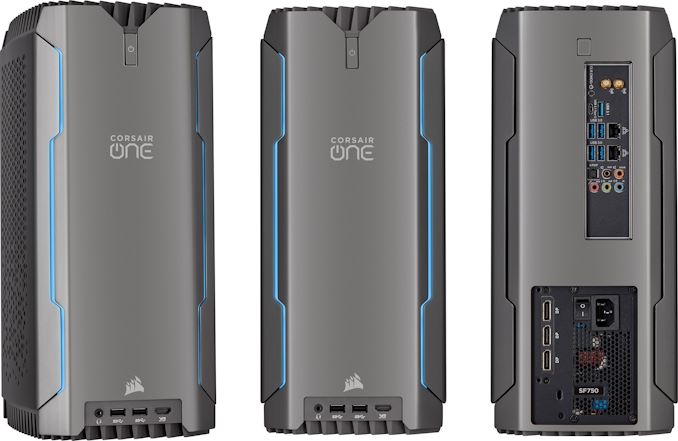

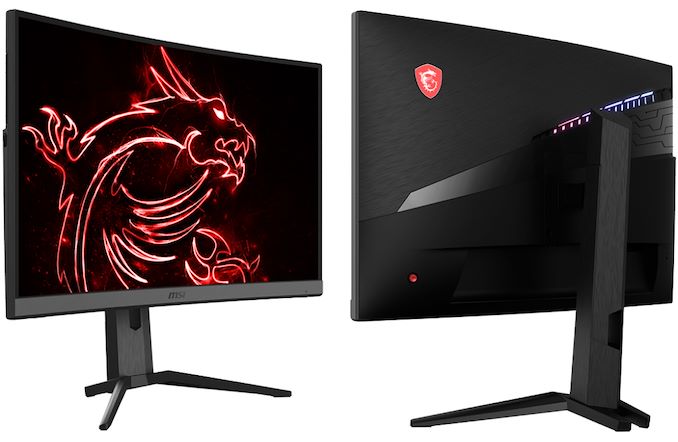
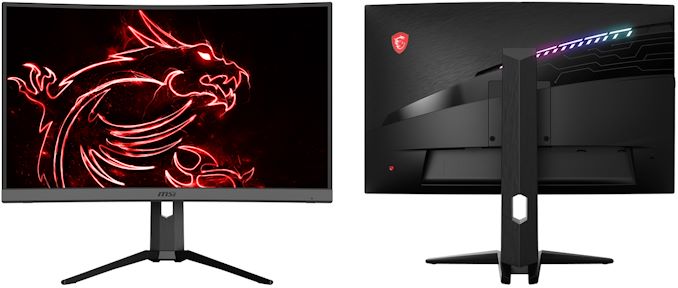

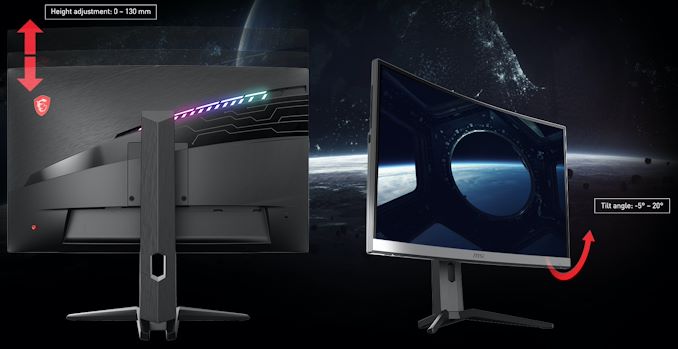
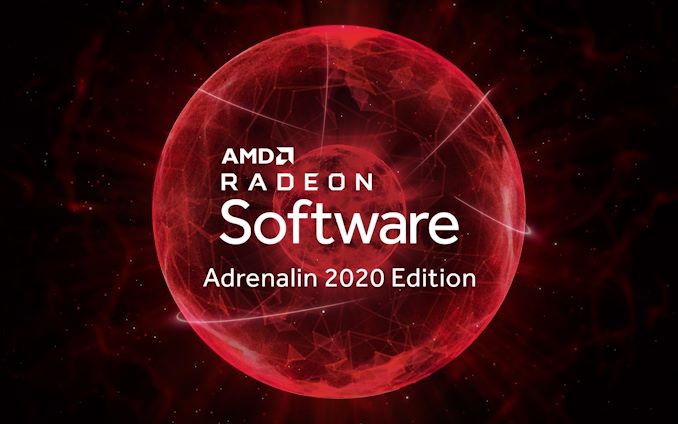




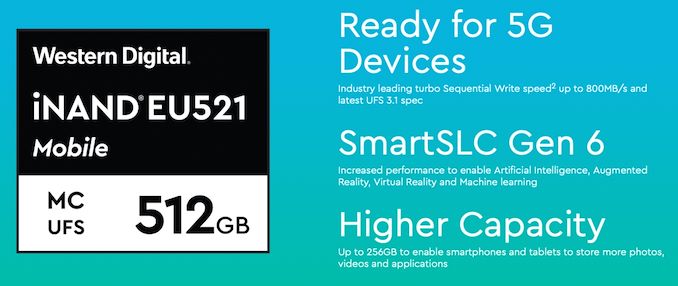
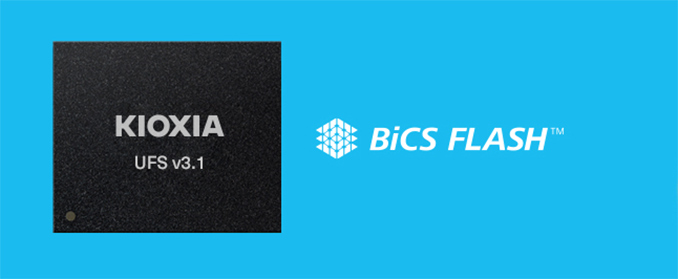
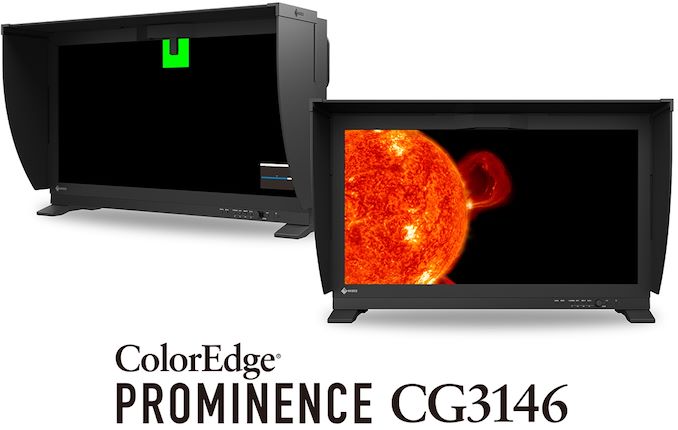

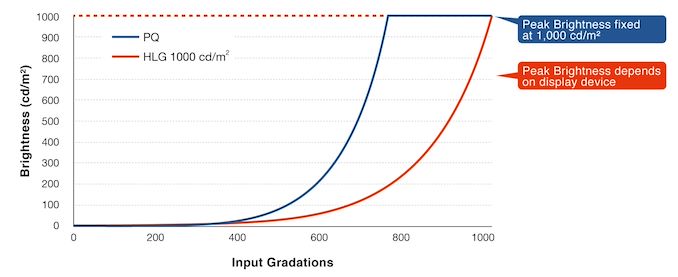
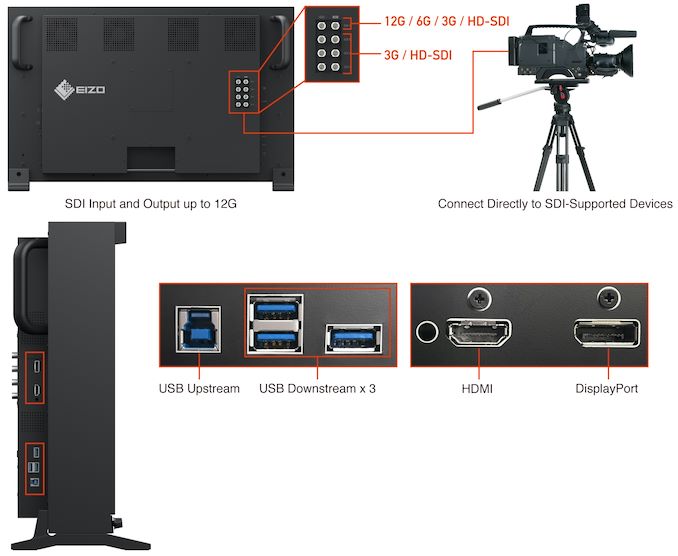

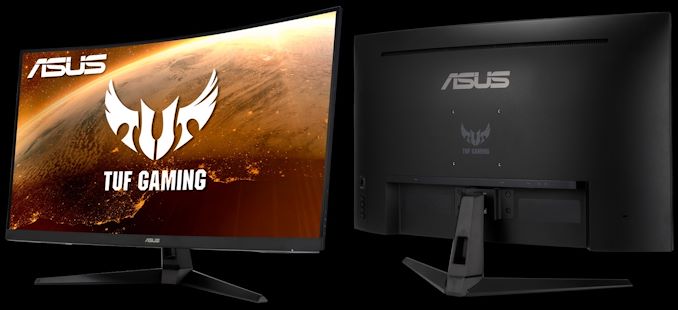
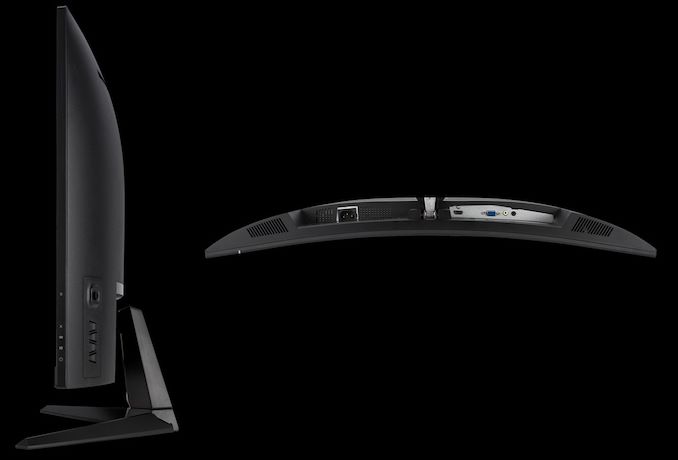
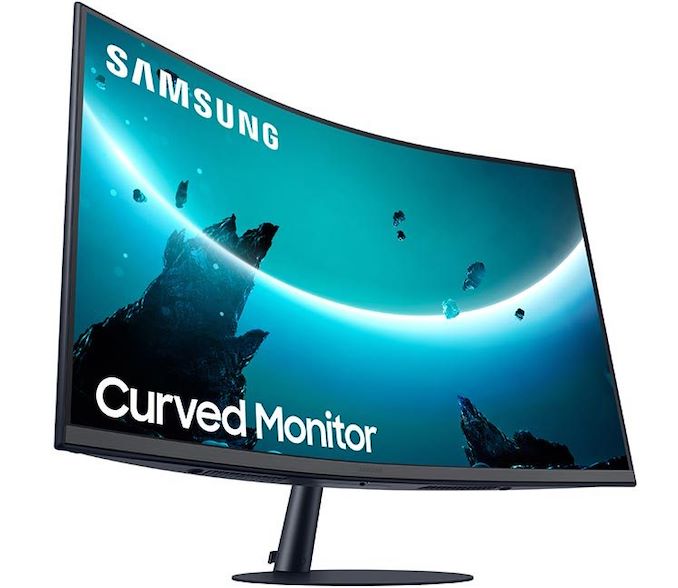
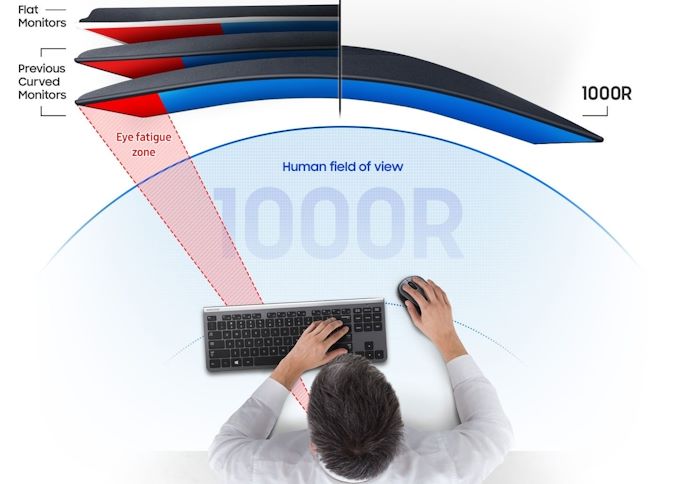
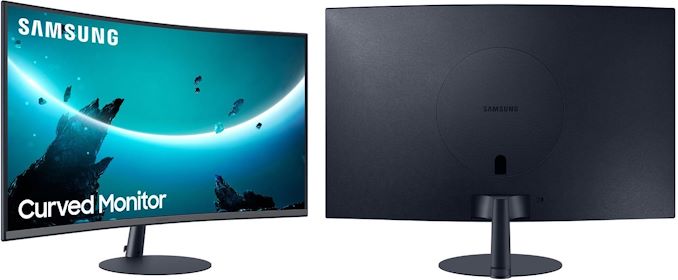
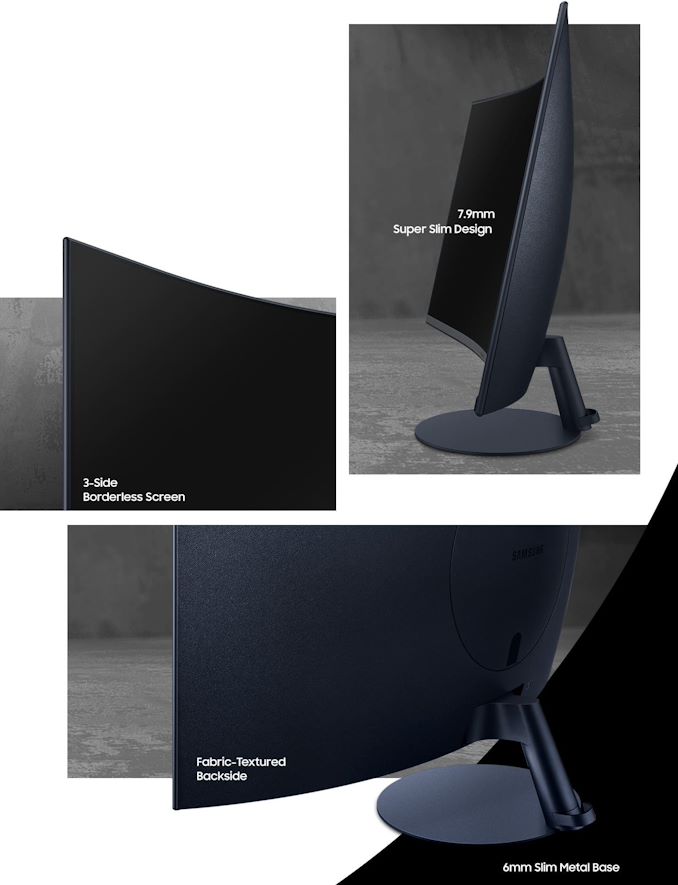
















Bookmarks